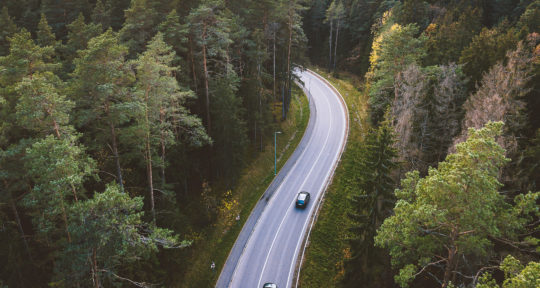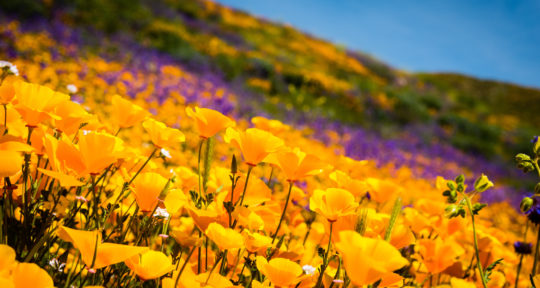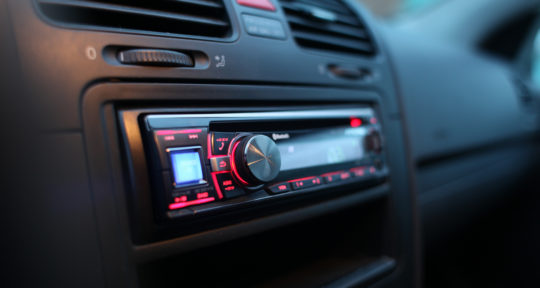We’re suckers for a good story, and that’s exactly why we’re such fans of Mikah Meyer. Inspired by his father, he’s set out on a mission to visit all 419 sites in the National Park System. Not just the big, famous national parks, but all of the protected parks. It’s a huge undertaking, one that’s taken years, but it’s been well worth the trip.
On his quest to conquer these NPS sites, he’s joined by “Vanny McVanface,” his trusty cargo van that he built out himself. Even though he’s pushing through the last leg of his journey, Mikah found a few free minutes in his busy schedule to answer a few questions for us about what everyday life looks like when you’re on the road to setting a world record.
What was life like before you lived on the road? What inspired you to make the change?
Like many people about to turn 30, I took stock of my life and wondered if it looked like I’d once imagined. I was singing with a professional
Tell us about your ride. How old is it? How long have you had it? Did you do any work on it? What do you wish was different about it?
Vanny McVanface is a 2014 Ram Promaster cargo van I’ve had for a little over two years now. I love him because with 6’ 4” of interior height, he’s just tall enough that I can stand up inside. That was the most important factor when I shopped for a van, because being hunched over in one’s home sounded dreadful.
I spent two months building out Vanny from a bare cargo van, but should’ve had a year. I was on a rushed deadline, and now wish I would’ve designed more easily accessible storage, a non-bed place to relax, running water/a bathroom, and a way to cook inside the van.
Other than the ride, what other preparations did you need to make to transition to living on the road?
Trusted friends and family to handle my mail. I don’t know a single vanlifer who doesn’t have a way to receive mail. It’s a cruel reality of our world—even as it becomes more digital; both our government and a number of businesses require an address to function, so handling mail either with trusted people or frequent stops to an address is a necessary evil.
Where are you now? Where are you headed next? How do you decide where to go?
I’m currently in the middle of British Columbia, driving the Cassiar Highway toward a summer visiting Alaska’s national parks for my world record journey to all 419 National Park Service sites. Because Vanny McVanface doesn’t have climate control (when not driving), I have to follow the seasons (summers up north, winters down south) to make van life bearable, and to access parks which are only open seasonally. Pretty much every itinerary decision I make is based on those two factors.
What’s the hardest part about living in a van? What have been some unexpected challenges?
The lack of down space. I so miss having a desk to fill with projects, an entryway to leave my shoes, or a couch to relax after a long day. Living in a van requires constant organization to keep from tripping all over your stuff or it flying everywhere when you drive. There’s also always a little anxiety when urban camping. Even after two years of never being told I couldn’t sleep somewhere, I still have restless nights of sleep where I wonder if someone’s gonna call the cops.
Where do you eat most of your meals?
My current situation might be different than most vanlifers, given that so much of my time is on a tight schedule and I have set locations I need to reach, but most of my meals are dictated by my national park visits. Usually I’ll have breakfast out of my solar-powered fridge, something like Greek yogurt and berries. And for lunch I’ll often snack on hummus, carrots, guacamole, or something I can keep in the fridge. Then for dinner I usually go to a fast-casual restaurant which has WiFi, so I can eat and work on the internet for three to four hours until they close.
Where do you find Wifi?
If I could afford it, I’d buy a hotspot, but as it’s rather expensive, I tend to use free or with-food options. Primarily public libraries, then coffee shops and fast-casual restaurants. “It’s great to see you, can I use your internet!” is also a phrase many of my friends have heard while hosting. As whenever I have deadlines or big projects that need to be finished, I can pull all-nighters well beyond library hours.
How do you shower?
I have a membership at a gym chain, which is a pretty common tactic for
Where do you park your van for the night? What kinds of places do you like to stay at?
Anywhere it’s normal to find a van overnight. Big box chain parking lots, hotel parking lots, residential streets with lots of other cars. Because I’m usually in towns at night to find WiFi, I don’t spend as much time in the free Forest Service or BLM sites as some do. Park and RV campsites can be quite pricey (even $20 just for a tent/car site), so if you’re also a vanlifer on a tight budget, you won’t find yourself in the amenity-laden RV parks or even state/national park campgrounds.
What are some essential tools that make living on the road easier?
An open mind and flexible spirit. I’m reminded anytime a friend joins me for a taste of vanlife just how abnormal my life is: I carelessly pull into a hotel parking lot, climb over the front seat, and jump into a sleeping bag for the night. So it takes seeing my friends’ uneasy faces to remind me how different my normal is. “Normal” will be constantly changing while living on the road, so come prepared with moveable expectations.
What lessons have you learned that you would pass on to those aspiring to live on the road?
I stare at the most beautiful places in the United States every day, and yet they don’t mean much without someone to share it with. So the number one thing I’m looking forward to when my parks project is complete is being able to invest in close relationships.
Rather than base your road life on just places you want to see, design it around who you want to be there with: No landscape or vehicle can give you what interpersonal relationships can.
Follow and support Mikah as he takes on the last leg of his journey to visit all 419 NPS sites! He’s on Instagram, Twitter, Facebook, or check out his website!





